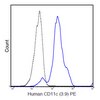Oligomerization conditions Mdm2-mediated efficient p53 polyubiquitylation but not its proteasomal degradation.
Hjerpe, Roland, et al.
Int. J. Biochem. Cell Biol., 42: 725-35 (2010)
2009
Mostra il sommario
In normal cells p53 is maintained at low level through the action of the ubiquitin-proteasome system. As a consequence of p53 transcriptional activity, various regulators of this tumor suppressor are produced, forming a negative feedback loop tightly controlling p53 stability. One of the most prominent is the ubiquitin-ligase Mdm2. Here, we have used a transfer of signals strategy to study the p53 degradation process promoted by Mdm2 in the absence of p53 transcriptional activity. Our results show that in a p53 null background, transcriptionally silent p53-fusions require multiple N- and C-terminal signals to be optimally targeted to proteasomal degradation. As for WT p53, p53-fusions able to form tetramers are polyubiquitylated and optimally degraded by the proteasome. However, p53 molecules unable to oligomerize, show Mdm2-mediated polyubiquitylation deficiency but are still targeted to proteasome degradation in vitro and ex vivo. In the presence of Mdm2, nuclear shuttling of p53 monomeric fusions favours proteasome-dependent degradability but not its polyubiquitylation. In vitro, 26S proteasome fails to drive degradation of OD mutants in the presence of Mdm2, suggesting the contribution of additional cellular factors in this process. All together, our results indicate that Mdm2-mediated proteasome-dependent degradation of polyubiquitylation deficient p53 monomers is mechanistically possible, taking alternative pathways to better achieve their proteolysis. These results support the existence of additional levels to regulate p53 stability and activity acting on individual subunits of the functional tetramer. | 20080206
 |














